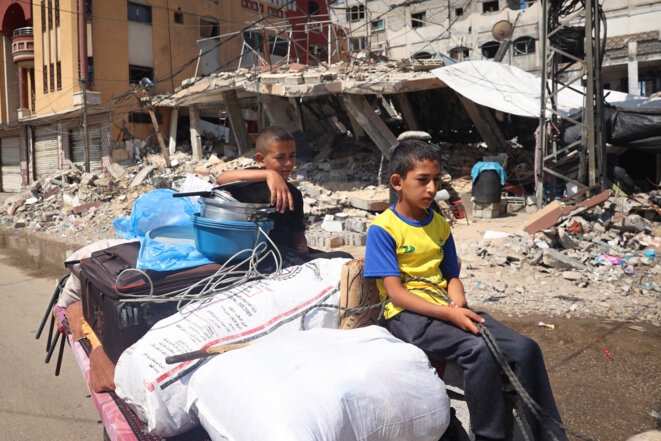The Iranian housing market continues to impose immense financial burdens on its citizens, particularly tenants, as rents soar to unprecedented levels, leaving many struggling to afford even basic accommodation.
The main reason for soaring rents and property prices is persistent high inflation, staying above 40 percent in the past five years. The national currency, rial, has fallen more than 15-fold since 2018 when the United States withdrew from the JCPOA nuclear deal and reimposed sanctions on Iran’s oil exports.
Azimi, a resident of District 5 of Tehran Municipality, located in the northwest of the capital, shared his distressing experience with Khabaronline news website in Tehran shedding light on the grim reality faced by countless Iranians.
"The owner of our house has raised the price more than I can afford," Azimi lamented. Following a 40% increase in rent demanded by the landlord, Azimi found himself unable to meet the exorbitant figure. Desperate for alternatives, he sought out smaller accommodations, only to be met with substantially higher rents for significantly smaller living spaces, leaving him with no viable option but to relocate to another area.
The latest reports from Iran's economic daily Donyaye Eqtesad revealed a staggering 42% increase in rents in April 2024 compared to the previous year, with projections indicating further spikes in the coming months, exacerbating the plight of Iranian tenants already grappling with financial precarity.
Azimi emphasized the disproportionate rental costs in his area, ranging from 4-5 billion rials annually, approximately between $6510 - $8140, averaging around $610 per month, rendering renting in his district unaffordable for the average citizen. With civil servants and ordinary workers earning meager monthly salaries barely exceeding $200, the disparity between income and housing costs has reached alarming levels.
Furthermore, the daunting prospect of purchasing a home remains elusive for many including Azimi, with the average cost of one square meter (11 sq feet) of apartments in Tehran and most other major cities above $1150.
"I have been a tenant in Tehran for many years, but I still haven't been able to get a housing loan," Azimi added.
Echoing Azimi's sentiments, another resident from the same district voiced distress over the worsening rental market crisis, stating, "While there are numerous rental properties available, the issue lies in their unattainable prices for prospective tenants, leaving us questioning who can actually afford them." Additionally, they added, "In fact, I encountered a 100% rent hike compared to last year, with no foreseeable plans in place to assist us."
A trade union activist from District 7 of Tehran, one of the urban areas of the capital, corroborated these grievances, citing a staggering 50% increase in the rental market. Additionally, he pointed to the stagnant real estate market caused by dwindling purchasing power regarding homeownership, adding that "no one is able to buy a house". "Property prices have decreased slightly, but it should be noted that the decrease in prices was not caused by inflation control, but due to a sharp decrease in purchasing power…” he added.
According to statistics released by the Statistical Center of Iran, the housing market witnessed an annual inflation rate of nearly 40% in the preceding twelve months. Moreover, late last year, Donyaye Eqtesad unveiled a startling statistic: the average time required for people to save enough money to purchase a home in Tehran has surged to 112 years.
As Iranians endure the relentless onslaught of rising rents, urgent intervention, and comprehensive measures are imperative to address the housing crisis. However, adding to the woes of Iranian tenants is the lack of government intervention and support.
Despite President Ebrahim Raisi's promise during his 2021 presidential campaign to tackle Iran's housing crisis by building one million affordable homes each year, there has been no indication of any new housing being delivered.
Furthermore, in 2022, reports emerged that Iranian banks refuse to give government-mandated mortgages and loans to people, despite the government's promise to help low-income workers.
In the midst of Iranians grappling with an annual inflation rate surpassing 40% over the last five years, compounded by low wages and a falling national currency now exceeding 610,000 against the US dollar, they now have to face the daunting challenge of securing a roof over their heads.

 1 week ago
27
1 week ago
27


